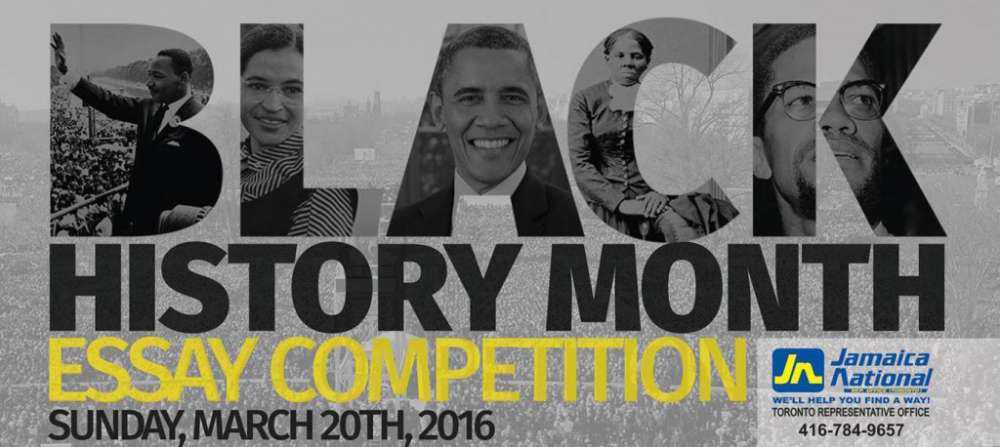BY ALYSSA MAHADEO
Encouraging youth development and stimulating the mind of students is the secret behind unlocking their true potential. Challenging them to capitalize on their abilities to speak up and find their own voice starts a chain reaction that can only impact their lives for the better.
Jamaica National Building Society’s Canada Representative office is proud to announce their third annual Black History Month essay contest. They are excited to open this year’s completion not only to those students in high school from grades 9-10, but also to middle school students in grades 6-8 located within the Greater Toronto Area. By opening the contest to more students, they hope to encourage young people to be more vocal with their opinions, and give them the opportunity to make their own positive impact within the community.
The young people of the community do not get enough credit for the ideas they have about promoting and implementing constructive change. By utilizing the platform of this essay contest, the opportunity to connect these students with the right people in the community will broaden their horizons, boost their self confidence and encourage them to make the right choices pertaining to their futures.
The rules for the contest are as follows: Students in Grades 9-12 are to submit a 600 word essay on the topic, “Describe how Corporations in Canada should interact with the Afro-Caribbean community? How do you think Jamaica National (JNBS) could have an even greater impact on shaping the Black Community?”
Students in Grades 6-8 are to submit a 300-400 word essay on the topic, “Describe a person of color that has impacted your life and inspired you to be a better person.”
The essays will be evaluated in three areas: The insightfulness of the essay. The essay is well structured and articulated. How well this essay addresses the topic.
Judges will be looking for how well students have demonstrated a thorough understanding of the essay topic and presented it in a unique and perceptive perspective.
All entries to the Jamaica National Black History Month Essay Contest are to be sent via email to info@jnbs.ca no later than Friday February 29, 2015 at 11:59 pm. The top four essay winners in the two student groups will be notified and invited with their parents and principal to attend a special awards ceremony to receive their prizes.
All essays must include the entrant’s: First and last name, name & address of school they are attending, e-mail address, grade level, contact number and name of school principal.
All students in Grades 6-12 from any school in the GTA are encouraged to participate. Participants under the age of 16 must have their parents email info@jnbs.ca for an “Entrant ID#.”
The prizes for the contest include:
Prizes: Grade 9, 10, 11, 12 Category
1st Prize – Laptop and $1,000 essay published in local newspaper
2nd Prize – iPad Mini and $200 Gift Card
3rd Prize – JN Prize Pack and $100 Gift Card
4th Prize – JN Prize Pack
Prizes: Grades 6, 7, 8 Category
1st Prize – iPad Mini and $250 Gift Card essay published in local newspaper
2nd Prize – Android Tablet and $150 Gift Card
3rd Prize – JN Prize Pack and $100 Gift Card
4th Prize – JN Prize Pack
An opportunity like this isn’t one to pass up! Parents are encouraged to support their children’s entrance to the contest and share with them the opportunity to contribute back to their Afro-Caribbean Legacy in celebration of Black History Month. Don’t wait, start writing today! Jamaica National wishes all contestants the very best of luck and thank the community for their continued support each year.

